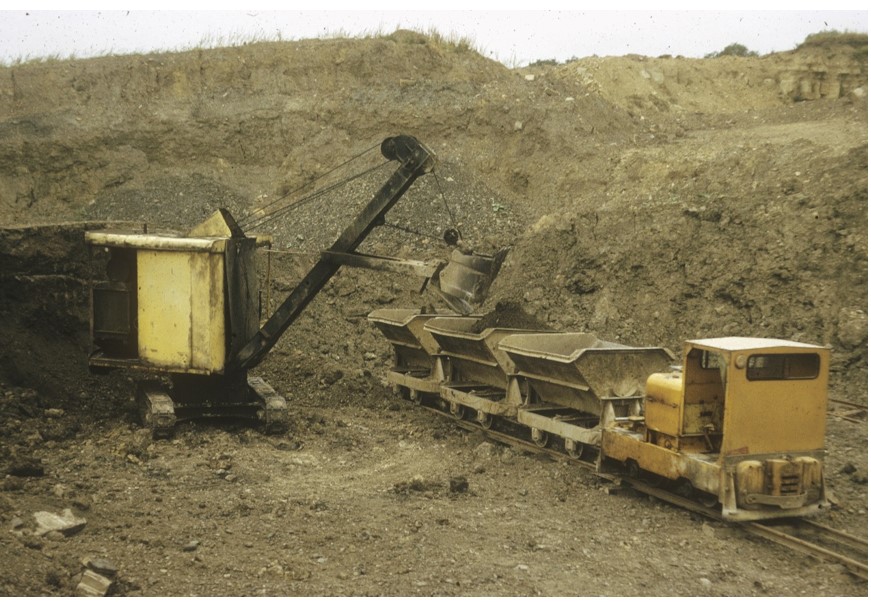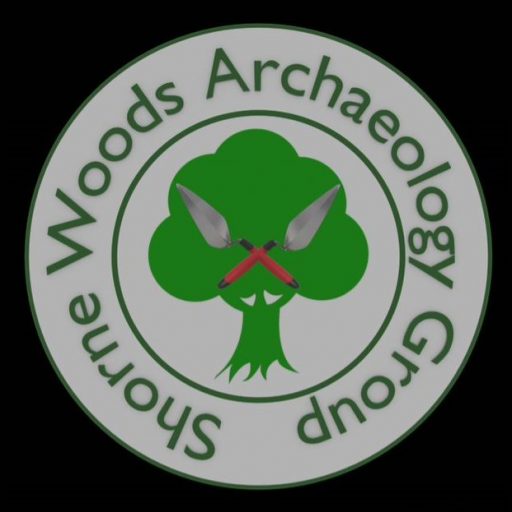I lived on Painters Ash Estate and went to Colyer Road school (Now Northfleet School for Boys). I left there in 1959, when I was 15 and went to work for Blue Circle at Bevan’s cement works, Northfleet. I wanted to do an apprenticeship but couldn’t start before I was sixteen, so worked in the Electricians workshop, as a ‘shop boy’ for a year. As the ‘shop boy’ I did all the odd jobs that anybody wanted, or needed, doing.
Once I started my apprenticeship I worked with the electricians and this was when I started going to the clay works in Shorne Woods (in those days it was known as Cobham, it became Shorne after the widening of the A2 in 1963). Breakdowns were not a common occurrence so I probably only went there about once a month, when we were called out to solve a problem. We dealt with anything electrical including pumps, lights and conveyors.
One day there was an OCB (Oil Circuit Breaker) fault which meant the power house shut down but work didn’t stop as there was always twelve hours of slurry in the tanks.
As far as general operation was concerned, the navvy (mechanical digger) dug the clay out and tipped it into a hopper, the hopper fed the conveyor belt and the conveyor belt fed the clay into the coarse (also known as rough) wash mill.

Although not taken at Shorne, this photo shows a navvy and a narrow gauge railwaythat are similar to those used at Shorne and other clay works
There were two wash mills, the first was the coarse/rough wash mill and the second, the fine wash mill.
The clay was tipped into the coarse/rough wash mill and washed and sent through sieves to the fine wash mill. The men would have to go into the coarse/rough wash mill monthly to clear out the flint and gravel that had built up.
From the fine wash mill, it went into the slurry tank and was then pumped all the way to Bevans cement works at Northfleet.
The conveyor belt would be moved as and when required. The train track was also moved but they had to be careful that the ground could take the weight of the engine and loaded wagons. There is one section of the conveyor, left in situ, that could be seen above the surface of the larger of the two fish ponds but has now sunk into the clay.
The slurry was pumped from Shorne, through a pipeline, alongside the A2, to the ‘Tollgate pumping station’ (the pumping station is behind where the Toby Carvery is now and not Northumberland Bottom, as we have been told previously) there were three Orenco pumps that pumped the slurry to Ebbsfleet. I’m not sure of the exact route the pipeline took from the Tollgate but I think it followed the line of the river Fleet and finally to the quarry. The three pump operators were Billy Tremain, Albert Stroud and Mr Taylor.
The pumping station was kept running 24hours a day and was covered by the three shift system. An example of one man’s shift pattern is –
Saturday 10 -6 back in Sunday 2 – 10 back in Monday 6 – 2. Only one man allowed off at a time and the shifts would be covered by the other two men doing 12 hour shifts. Nobidy took weekends off as these were paid at a higher rate, time and a half for Saturday and double time for Sunday. If there was a need for extra cover there was a backup man, trained to run the pumps, at both Shorne and Northfleet that could step in.
On one occasion; the pipe line split at the Tollgate and there was slurry all over the A2 that stopped the traffic. A mechanical shovel was sent out to clean up. They were working into the night when the police stopped them as there was no rear light on the shovel. The problem was solved by two men with red lights walking behind the shovel for the rest of the night.
We used to go into the canteen for a sit down and a cup of tea, it was a typical works canteen, not particularly inviting!
One day, one of the old men on the pumps said “do you like pheasant”, I told him I didn’t know as I’d never tried it, to which he said “come with me”. He made a small hole in the ground and put a paper cone in it, smeared it with treacle and sprinkled corn into it. The pheasant would put their head in the cone and the treacle made it stick to their head. They couldn’t see anything and were easy pickings. When he had caught one his words were “thank you Lord Darnley”.
Flint, that had been extracted when the raw clay was put through the sieves in the coarse wash plant, was taken to a company called Flintag that was at Stone marshes (near Dartford). Some of It was crushed, coloured and used for aquarium gravel and some sent to potteries for use in ceramics. It was also used for non-slip flooring by mixing with epoxy resin. (Flintag aggregate is still available today.)
Some of the navvies were electric and powered through a cable from the power house to wherever the navvy was working. It was a frequent occurrence for the cables to be run over. The further away from the power house, the larger the cable, to ensure the voltage required reached the navvy.
There were two engines and two navvys on site but only one of each was working at a time. The engine shed was where the engines were repaired or kept when not being used.
Trevor told me that there were train tracks on the upper South bank but I don’t have any knowledge of these. (Trevor – it could be that these were out of use by the time that Peter worked at Shorne).
After 20 years, I received a tie and after 35 years I received another tie and a pair of gold cufflinks and certificates for both.
As told to Trevor Bent January 2022.

